Biophilic Design Principles: Welcoming Nature Back Into Everyday Spaces
Chosen theme: Biophilic Design Principles. Explore how natural light, materials, patterns, and living systems nurture human well-being at home and work. Dive in, share your own nature-inspired moments, and subscribe for grounded, practical inspiration you can use today.
From E.O. Wilson to Your Living Room
Biophilia describes our innate affinity for nature, a concept popularized by E.O. Wilson and advanced by Stephen Kellert. Bring it home through simple acts: open a window, add a plant, or display stones you collected during a meaningful walk.
Fourteen Patterns, One Human Need
Researchers summarized biophilic design in fourteen patterns, from visual connections with nature to materiality and spatial complexity. You don’t need all fourteen to feel better—start with one pattern that fits your space, then layer thoughtfully.
A Small Story of Big Calm
When our team placed a small pine branch in a simple vase beside the entry, the scent softened morning rush and sparked conversation. That humble cue of season and place made the hallway feel like a welcoming trailhead.
Light that Aligns with Life
01
Position your breakfast nook where low-angle sunlight can greet you gently. Even fifteen minutes of natural light helps synchronize your body clock, improving alertness and sleep quality without complicated technology or expensive renovations.
02
Nature’s light changes throughout the day. Recreate that dynamism with layered window treatments, reflective surfaces, and adjustable lamps. Shift color temperature and intensity over time to echo sunrise, midday vibrancy, and warm evening wind-down.
03
A leaf casting a moving shadow across a wall adds silent drama and comfort. Celebrate this subtle choreography by clearing windowsills, pruning exterior branches thoughtfully, and letting pattern, texture, and time converse on your interior surfaces.
Living Green: Plants, Walls, and Indoor Ecology
We introduced a resilient pothos on a dull shelf. Within a week, people gathered there to chat, water, and watch new growth. Productivity didn’t magically double, but morale and micro-connections rose in a visible, tender way.
Living Green: Plants, Walls, and Indoor Ecology
Mix plant species with different heights, textures, and needs. Pair a trailing vine with an upright fern and a tactile succulent. Diversity supports resilience, adds visual richness, and lowers the risk of losing everything to one pest.
Living Green: Plants, Walls, and Indoor Ecology
Caring is connection. Set gentle watering reminders, assign plant buddies in shared spaces, and celebrate first blooms. This ongoing ritual turns design from a static picture into an evolving relationship that strengthens community bonds.
Natural Materials, Honest Texture, and Calming Patterns
Touch reveals truth faster than eyesight. A hand-rubbed oak rail feels warmer and more trustworthy than plastic laminate. Test finishes with closed eyes; choose surfaces that invite slow contact and hold subtle temperature and grain.
Nature’s repeating patterns at different scales—fractals—reduce stress and support visual comfort. Incorporate them through woven textiles, veined stone, or leaf-like screens. These quiet rhythms soothe the brain without demanding attention or cluttering space.
Build palettes from moss, bark, and sky: muted greens, warm browns, deep blues. Accentuate with seasonal notes—spring leaf, autumn rust—so your interior feels alive, grounded, and responsive rather than frozen in a single tone.
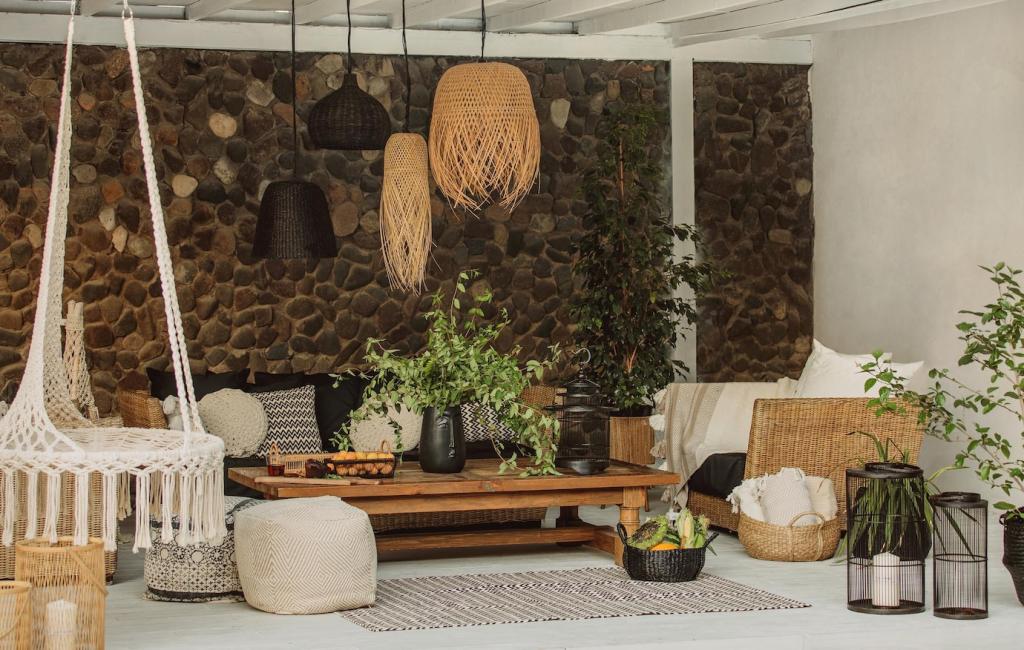
Cross-ventilation, diffuse fans, and operable windows cue the body that the environment is dynamic and healthy. Vary airflow slightly during the day to mimic breezes, reducing stuffiness while preserving acoustic and thermal comfort.
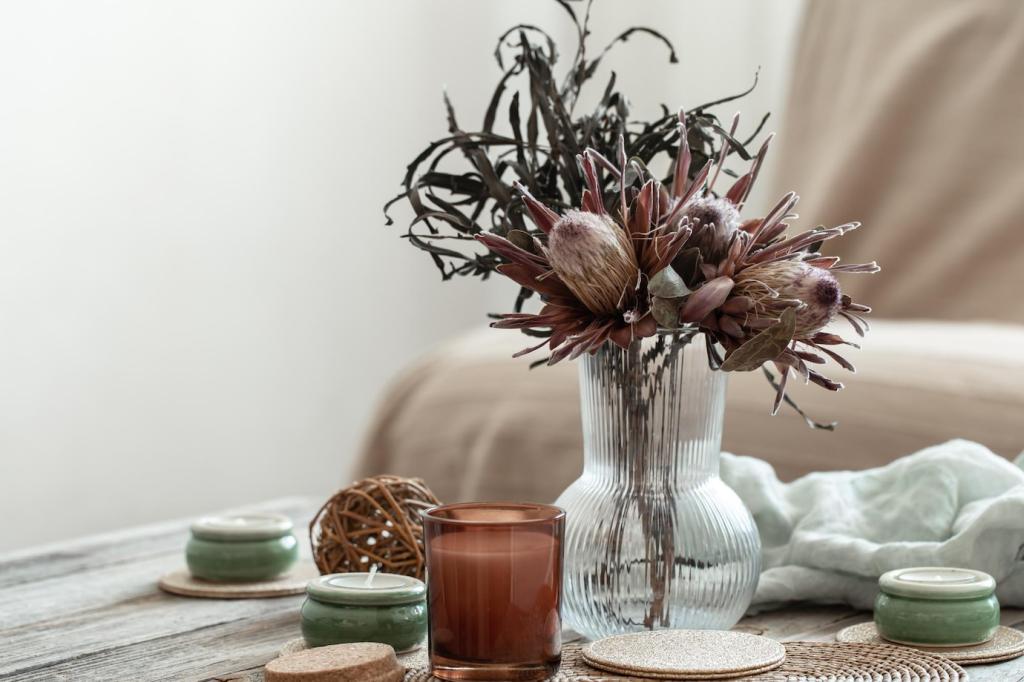
A small tabletop fountain or a view of rain can lower heart rate and invite reflection. Keep sound levels gentle, choose natural materials for the basin, and place it where light can sparkle without causing glare.
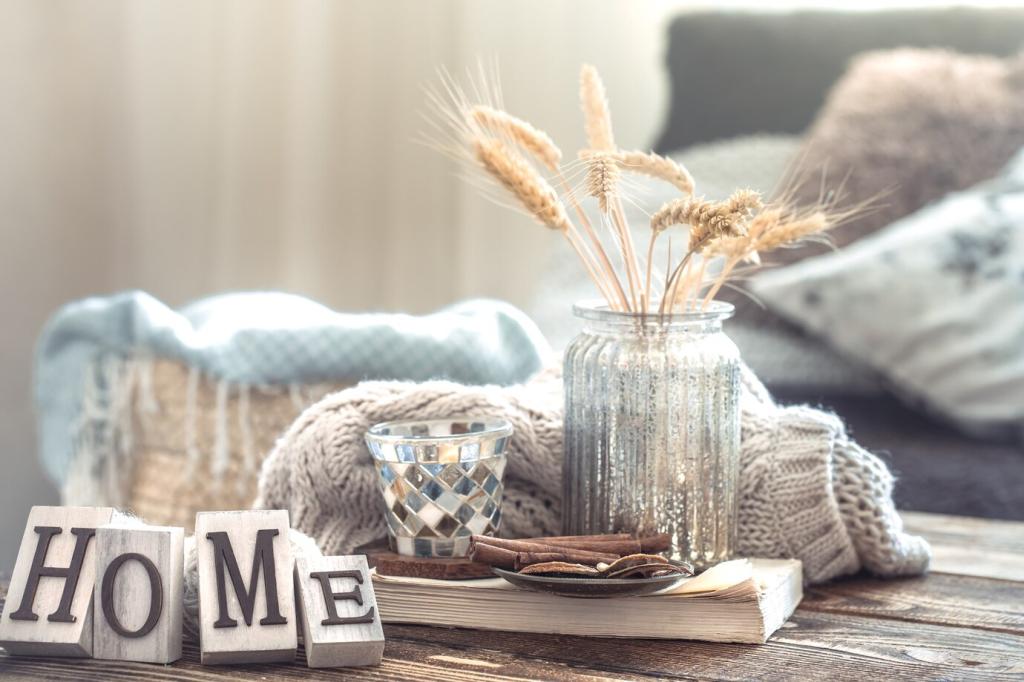
Absorb harsh echoes with wool rugs, cork panels, and book-lined niches. Aim for a soft hush rather than silence, so the faint rustle of leaves or distant conversation adds context without overwhelming attention.
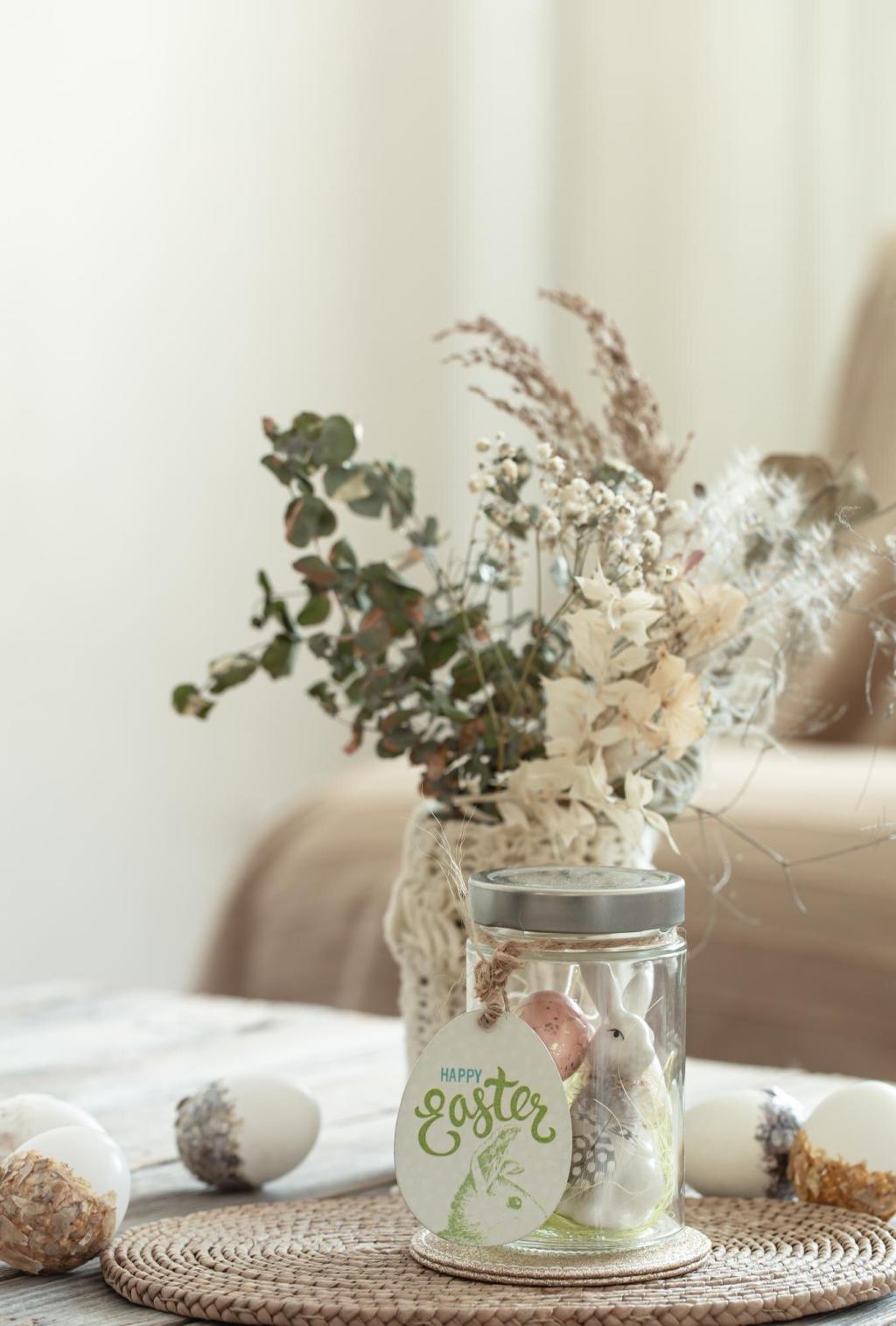
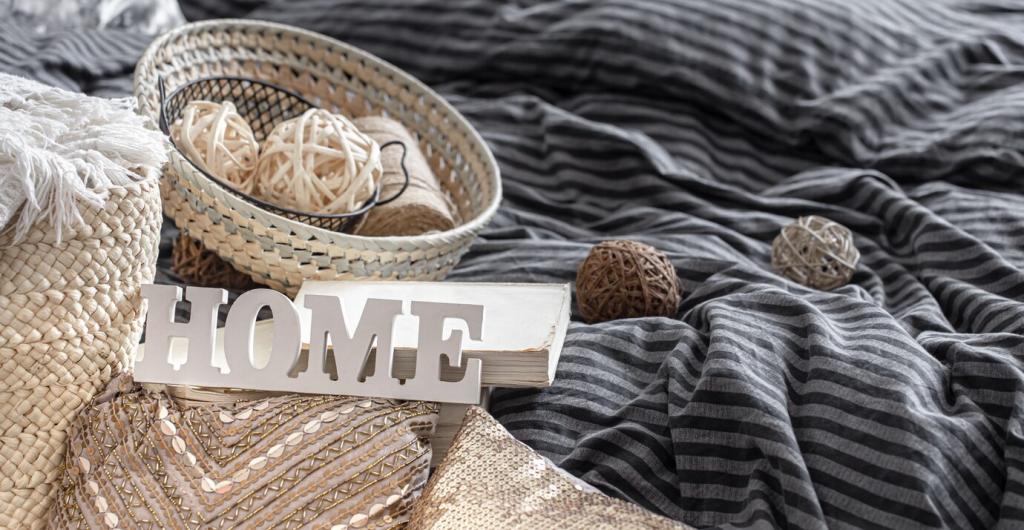
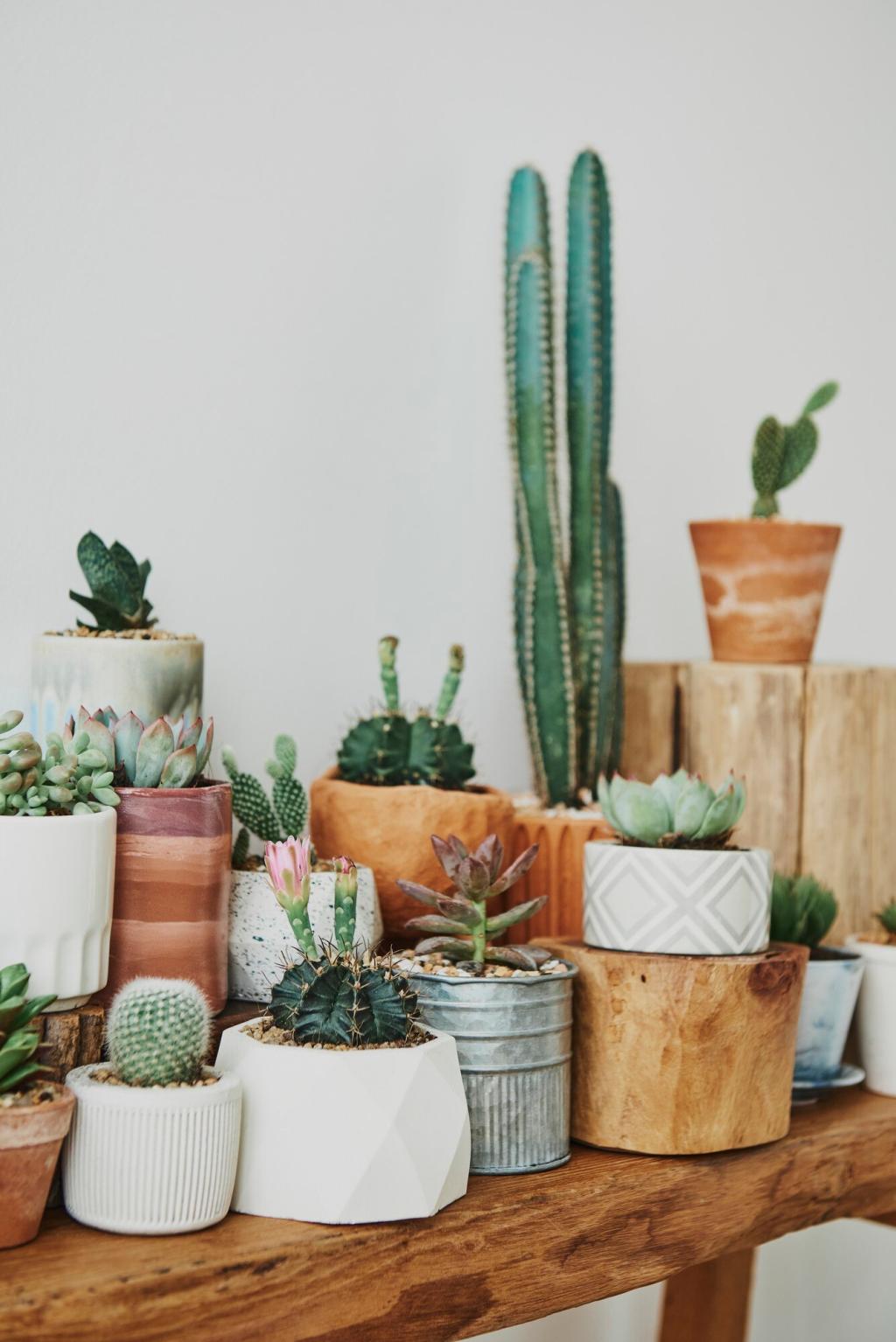
From Principle to Practice: Start Small, Measure, Share
Walk your space with fresh eyes at morning, midday, and evening. Note light quality, airflow, plant health, material authenticity, and views. Choose one improvement per week so progress feels achievable rather than intimidating.
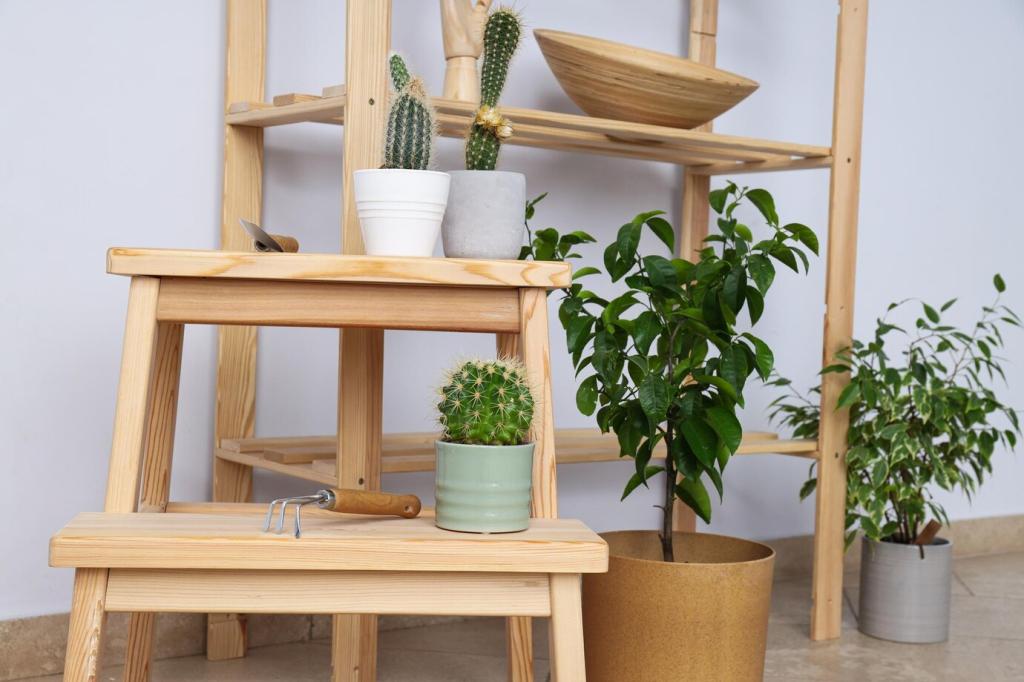
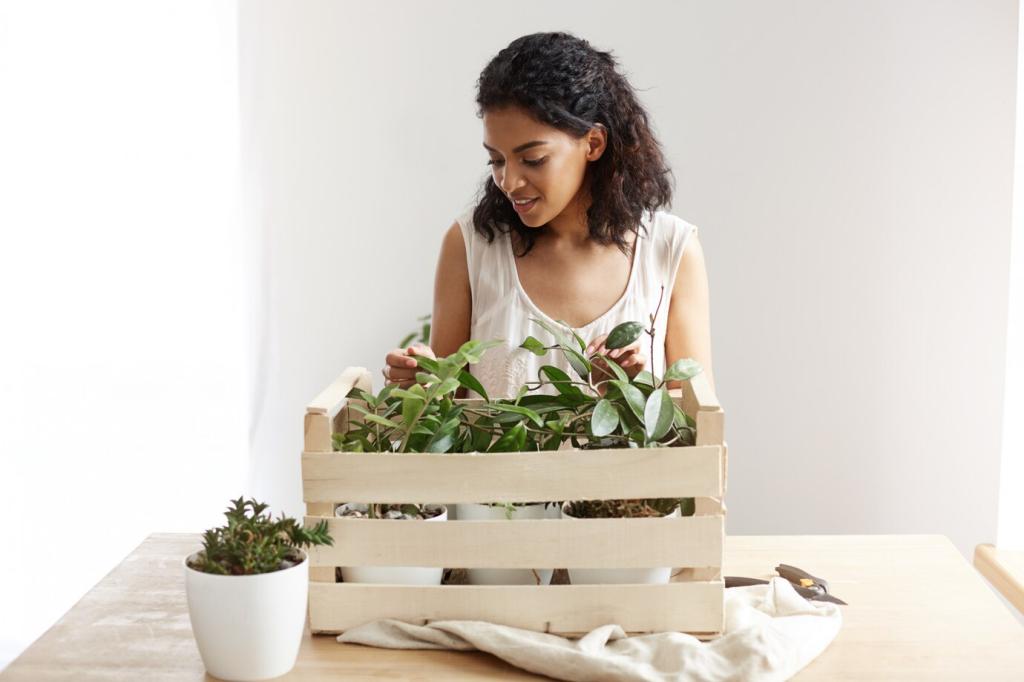
From Principle to Practice: Start Small, Measure, Share
Track simple indicators: time spent by windows, self-reported stress, break quality, and evening sleep. If you can, add light levels, acoustic readings, and air quality. Share results with your household or team to stay accountable.
